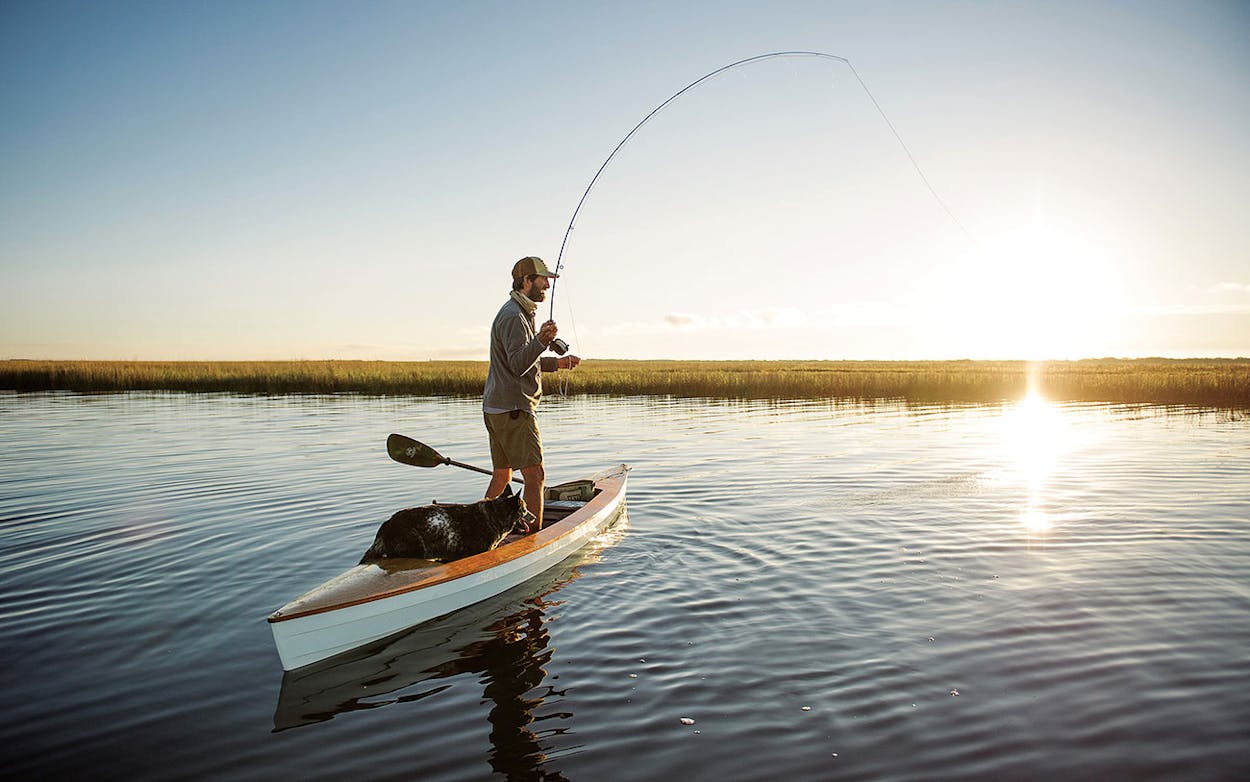This article originally appeared in the September 2017 issue of Texas Monthly with the headline “The Art of Sight-Casting.”
JT. Van Zandt, clad in polarized sunglasses, ball cap, and neck bandanna, steps onto his skiff in Aransas Bay, near Rockport, and disappears. He knows just where the fish are biting. Van Zandt, the eldest son of the legendary singer-songwriter Townes Van Zandt, has uncovered countless secret spots since he began guiding trips in the early nineties. “Deciding to become the best fishing guide I could be was the end of confusion in my life,” he says.
In fact, his devotion to angling took root during summers spent with his grandmother, in Hallettsville. He started out with a makeshift cane pole. Fly-fishing came later, while in college at the University of Texas. After spending years making wooden boats (which he still uses, often with clients), he focused on guiding full-time in 2012.
His specialty is fly-fishing for redfish—a style of angling known as sight-casting. Simple it is not. As with hunting game, you must wait until you see a fish under the surface before presenting the fly, rather than throwing a lure in randomly. “The experience of hooking fish that you see is the pinnacle of the sporting experience,” he says.
And it’s the reason the Coastal Bend area is special to Van Zandt; he and his wife and two boys divide their days between Austin and Rockport, where he leads trips ($450 and up). Van Zandt also enjoys more anonymity on the coast; he’s better known for his reputation as a guide than for his famous father. “If I hang around Austin, it’s nothing but Townes. Down south, it’s less likely,” he says. “But Townes’s impact is so personal to people that I never mind hearing how he affected someone’s life.”
J.T.’s Rules for Reaching the Sight-Casting Sweet Spot
Slow it down. It’s the hardest thing to do. Never rush it. Be patient and wait for your opportunity.
Perfect your form. Whether you are using a fly rod or conventional tackle, sight-casting requires accuracy, which can be acquired only by practicing.
Find the flow. Fish follow the tide to shallower and shallower water, so sit back and watch before you cast.
Don’t push it. Never expend more energy than you stand to gain. It’s just like it is with the fish: they’ll never spend more calories than the prey offers in return.
To book an expedition, call 512-461-4667 or visit jtvanzandt.com.







